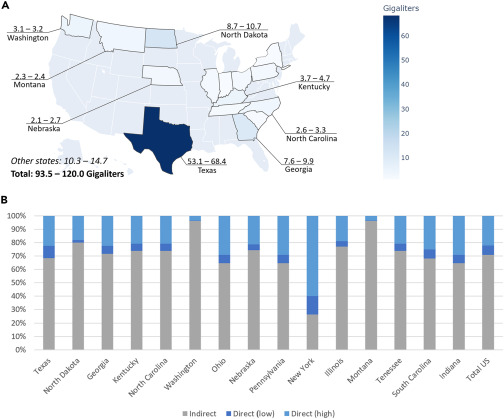
Cryptocurrency mining, mainly with Bitcoins and Ethereum, has always been controversial due to the energy and resource consumption required to mine the currency. However, Bitcoin has a new concern, as a recent report outlines that it uses 4,227 gallons of fresh water for every single transaction, either for buying or selling. Because of these transactions, many countries, such as the United States, could face freshwater shortages if the currency becomes more widely adopted.
This detailed report emphasizes Bitcoin's impact on worldwide water security while comparing it to Kazakhstan, which has much larger freshwater consumption and some mitigation solutions. This study was done by a data scientist at DNB and a researcher for VU Amsterdam, Alex De Vries, who stressed that its water consumption footprint has increased over the years. He also calculated that the computational process behind the Bitcoin network uses 8.6 to 35.1 billion liters of water annually in the United States or roughly one swimming pool's worth of water per transaction.
How Is the Freshwater Consumption Calculated?
The study includes both direct and indirect water footprints, both of which are from freshwater sources. These data centers consume water for cooling systems and air humidification to maintain these servers. Other sources of freshwater consumption are from its usage for electricity production required to keep these servers active. The consumption of electricity is constant, and so is the use of water.
From this observation, it is then calculated that 4,227 gallons of fresh water is used during every transaction.

In the United States, as of March 2023, there has been an annual total consumption between 93.5 to 120 Gigalitres, equivalent to the average water consumption of about 300,000 American households; most of the bitcoin mining occurs in Texas, whose consumption is 53.1 to 68.4 GL of freshwater. These consumptions are calculated from large-scale Bitcoin operations. To frame a perspective of its volume, one gigalitre (GL) is equivalent to 1,000,000,000 liters (264,172,052 gallons) or 1,000 megaliters.
The studies also observe the bitcoin mining operation in Kazakhstan, which could face a significant freshwater shortage of 997.9 GL by 2030. This is mainly because China banned Bitcoin operations, and as a consequence, many mining operations shifted there, making the country the largest hub for Bitcoin mining. However, the consumption by the United States isn't tiny, but specific solutions can be implemented to benefit the local population.
Differentiating between direct and indirect water consumption is essential as it identifies and helps implement an alternative method to save precious usable water for human, animal, and environmental consumption.
Solutions for a Growing Problem
Many pragmatic solutions can be implemented quickly, such as immersing mining servers in dielectric fluid for cooling instead of water cooling. Indirect water consumption can also be reduced if power stations switch to sources that do not use water, such as wind, solar, and thermoelectric power generators using dry cooling systems. Switching to non-fresh water sources also helps, especially in states with a coastline. While it may not address all of the freshwater consumption problems created by this operation, it can help mitigate while addressing other concerns, such as electronic waste.
The Ethereum network, in comparison, has reduced its power consumption by modifying its central ecosystem and software. However, the Bitcoin community is reluctant to make such software changes. A bill called the Crypto-Asset Environmental Transparency Act would force crypto mining operations and such data centers to disclose emissions mandatorily, giving more water usage data. This implementation isn't exclusive to cryptocurrency, and Meta announces its water footprint, providing a blueprint of how its impact can be calculated and made to be declared. While most Bitcoin mining happens outside the US, this will act as a framework for other countries should they be willing to implement it accordingly.







